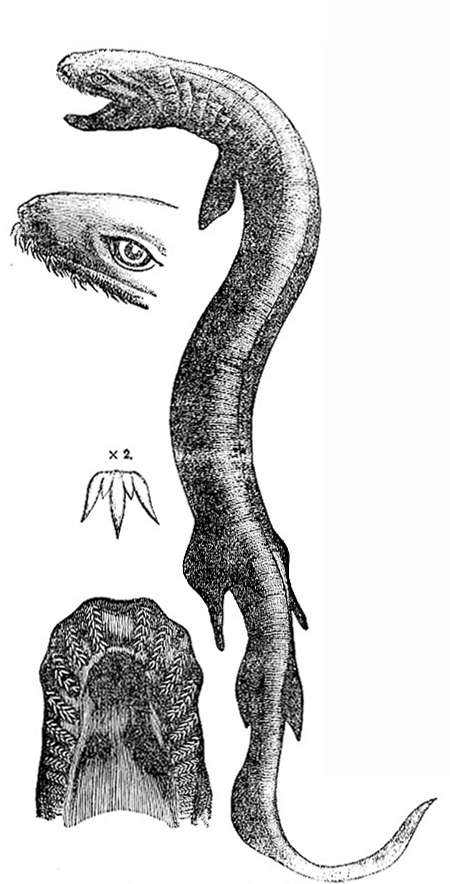1902 Encyclopedia > Shark > Bathybial Sharks. Scylliidae. Spinacidae. Centophorus. Notidanidae.
(D) BATHYBIAL SHARKS. -- Sharks do not appear to have yet reached the greatest depths of the ocean; and so far as we know at present we have to fix the limit of their vertical distribution at 500 fathoms. Those which we find to have reached or to pass the 100 fathoms line belong to generic types which, if they include littoral species, are ground sharks, -- as we generally find the bottom-feeders of our littoral fauna much more strongly represented in the deep sea than the surface swimmers. All belong to two families only, the Scylliidae and Spinacidae, the littoral members of which live for the greater part habitually on the bottom and probably frequently reach to the 100 fathoms line.
Distinctly bathybial species are two small dog-fishes, -- Spinax granulatus from 120 fathoms, and Scyllium canescens from 400 fathoms, both on the south-west coast of south America; also Centroscyllium granulatum from 245 fathoms in the Antarctic Ocean, whose congener from the coast of Greenland probably descends to a similar depth.
The sharks which reach the greatest depth recorded hitherto belong to the genus Centrophorus, of which some 19 species are known, all from deep water in the north Atlantic, Mediterranean, the Molucca and Japanese seas. The Japanese species were discovered by the naturalists of the "Challenger" on the Hyalonema ground off Inosima in 345 fathoms. Dr. E. P. Wright found C. coelolepis at a still greater depth on the coast of Portugal. The fishermen of Sétubal fish for these sharks in 400 or 500 fathoms, with a line of some 600 fathoms in length. "The sharks caught were from 3 to 4 feet long, and when they were hauled into the boat fell down into it like so many dead pigs" ; in fact , on being rapidly withdrawn from the great pressure under which they lived they were killed, like other deep-sea fishes under similar circumstances. It is note worthy that the organization of none of these deep-sea sharks has undergone such a modification as would lead us to infer that they are inhabitants of great depths.
One of the most interesting types of division of shark is the small family of Notidanidae, which is externally distinguished by the presence of a single dorsal fin only, without spine and opposite to the anal, and by having six or seven wide brachial openings. They represent an ancient type, the presence of which in Jurassic formations is shown by teeth extremely similar to those of the living species. Their skeleton is notochondal. Only four species are known, of which one (Notidanus griseus) has now and then strayed northwards to the English coast.

Fig. 16 -- Chlamydoselachus anguineus
A member of these family has been recently discovered in Japan, and is so scarce that only two specimens are known -- one in the museum at Cambridge, U.S., and the other in the British Museum. It was named by its first describer, S. Garman, Chlamydoselachus anguineus. It resembles somewhat in shape a conger, and differs from the Notidani proper by its elongate body, wide lateral and terminal mouth, extremely wide gill-openings, and peculiarly formed teeth. The teeth are similar in both jaws, each composed of rudimentary points, and with a broad base directed backwards. These teeth resemble some fossils of the middle Devonian, described as Cladodus, and North-American naturalists regard, therefore, this fish as "the oldest living type of vertebrate." The Notidani are very probably ground-sharks, perhaps descending into deep water ; and, although nothing positive is known at present of the habits of Chlamydoselachus, the fact that this singular type has escaped so long the observation of the numerous collectors in Japan renders it probable that it inhabits depths the exploration of which has been initiated only recently.
Read the rest of this article:
"Shark" Article - Table of Contents
|
